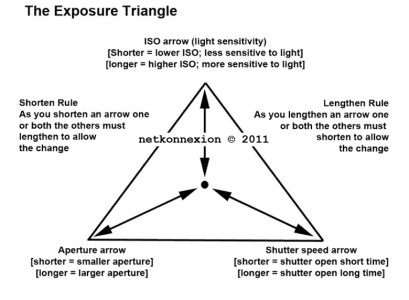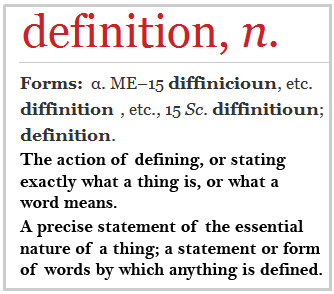![]()
Exposure Triangle
In the use of a camera there are three primary controls…
- ISO… Controls the sensitivity of the digital sensor to light. Low ISO produces a better quality photographic result. Higher ISO means you can shoot in lower light, but the quality of the image will increasingly be affected by Digital Noise.
- Aperture Sets the width of the aperture hole in the photographic lens and determines the Depth of Field:.
- Shutter Speed… determines the length of time that the shutter is open. Longer open = more light collected. Also longer opening means more potential for movement (and therefore blur) in the scene.
The Digital sensor in a modern camera is, like film, only sensitive to certain amounts of light. Too little light and the resultant image will be black with under-exposure. Too much light and the sensor will be white with over-exposure.
Exposure control relies on a balance being maintained between the three primary controls. Optimal balance between these three will give a realistic representation of the scene. Around that optimum some variations are possible and will give varying levels of under and over exposure.
The exposure triangle is an aid to remembering the three controls and helping photographers to think through the process of setting each of them to achieve the exposure required.

• The Exposure Triangle •
Use the exposure triangle to remind you of the need to maintain a balance between the settings and how that balance affects the final look of the photo.
Photographic Glossary – Definitions, articles and resources…
Definition: Exposure
Definition: Exposure Triangle
Definition: Aperture
Definition: f number
Definition: Depth of Field:
Definition: ISO
Definition: Digital Noise
Definition: Shutter Speed
Definition: DSLR; Digital Single Lens Reflex Camera
Definition: Photographic lens
Comments, additions, amendments or ideas on this article? Contact Us



